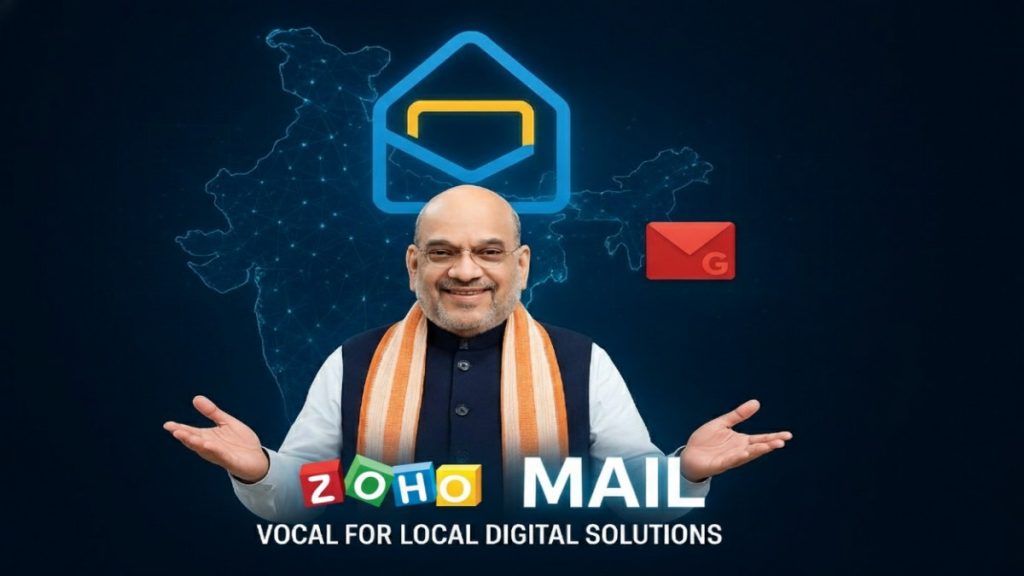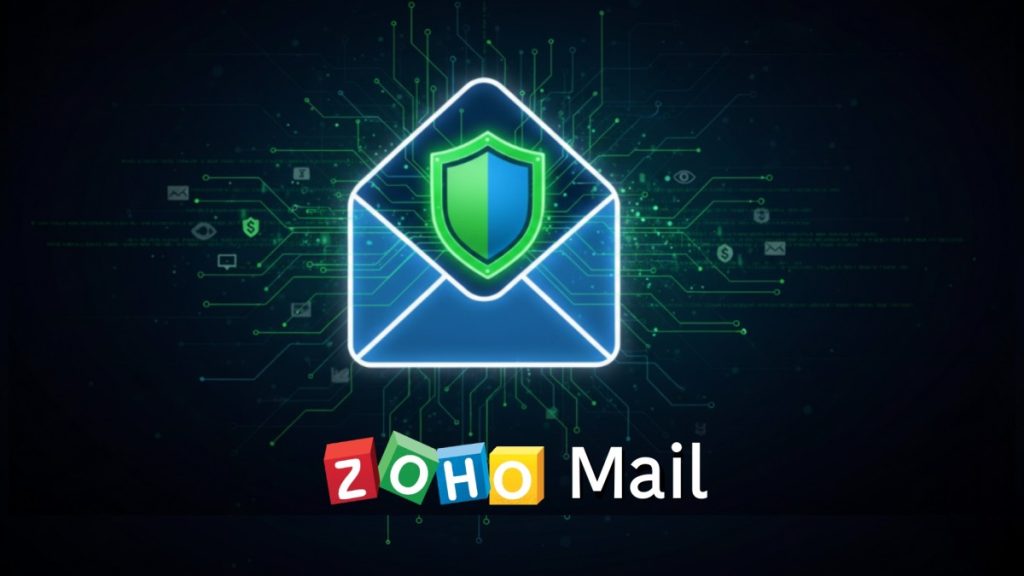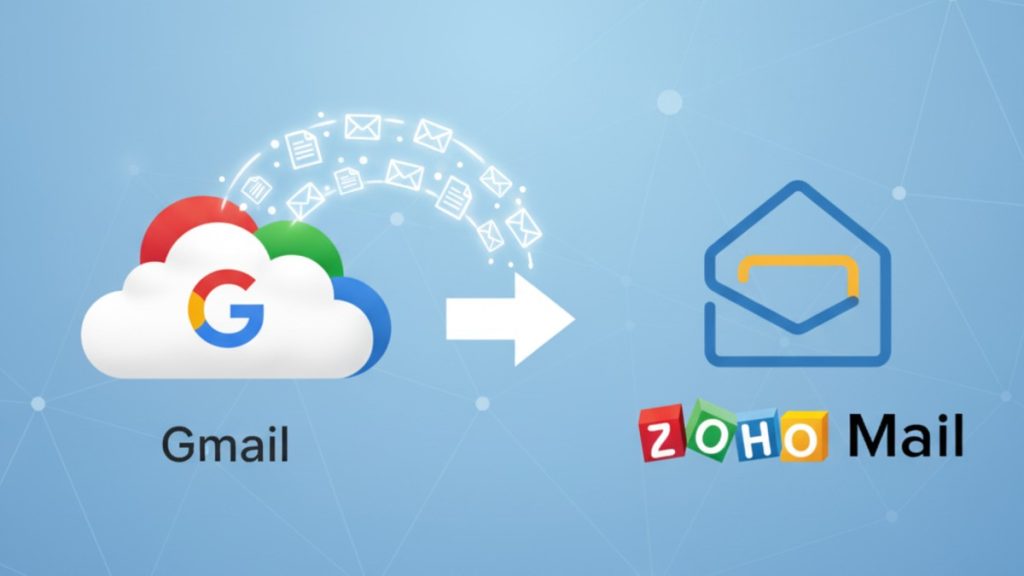
A tectonic shift is underway in India’s digital landscape, signaling a strong commitment to homegrown technology and data security. Union Home Minister Amit Shah recently announced his decision to transition his official correspondence to Zoho Mail, the email platform developed by the Chennai-headquartered technology giant, Zoho Corporation. This move is far more than a simple preference swap; it is a high-profile endorsement of the ‘Vocal for Local’ ethos, placing a crucial focus on national data sovereignty.
The switch has amplified the conversation around digital self-reliance, with countless individuals and businesses now asking: If a key government official trusts an Indian alternative with sensitive communications, should I consider it too? The good news is that accessing this secure ecosystem doesn’t require a government budget. You can try the core experience with a zoho mail free plan.
This significant technology choice highlights several key trends for every digital citizen:
- Political Endorsement: Home Minister Amit Shah’s move follows a growing trend among senior Union Ministers, solidifying the push for using domestically developed digital platforms.
- Security & Privacy: The primary motivator for the shift away from globally popular services like Gmail centers on enhancing data security and ensuring greater control over sensitive information.
- Accessibility: The availability of a powerful zoho mail free service means this secure, ad-free alternative is accessible to individuals and small businesses looking to enhance their digital privacy posture.
The Political Signal: Why India’s Top Leaders Are Choosing Homegrown Email
The Union Home Minister’s decision to shift to Zoho Mail is a powerful symbolic gesture that underscores the government’s aggressive push toward digital Atmanirbharta (self-reliance). For years, government and private communications in India have relied heavily on platforms owned and operated by foreign tech giants. While these services are robust, they often raise questions regarding jurisdiction, data localization, and privacy compliance with Indian laws.
The move by Minister Shah puts an official seal of approval on Indian enterprise, encouraging the country’s vast user base to explore high-quality, indigenous solutions. This shift is not just about choosing an email client; it’s about making a statement that India has the capability to create world-class software that prioritizes national interests and security.
The Push for Data Sovereignty
In the digital era, data is the new oil, and controlling where that data resides and who controls its access is paramount to national security. Data sovereignty dictates that data is subject to the laws and governance structures of the nation in which it is collected. When government communications reside on servers located outside the country or under the jurisdiction of foreign laws, it creates potential vulnerabilities.
Zoho Corporation, by contrast, operates under Indian law and has been vocal about its commitment to protecting user data from mass surveillance and external legal mandates. This focus on local data centers and clear adherence to the nation’s regulatory framework offers an enhanced layer of trust, especially for government and sensitive professional use.
The Precedent Set by Cabinet Peers
Amit Shah is not an outlier in the Indian government’s tech pivot. Several high-ranking officials have already championed Zoho’s ecosystem, creating a clear pattern of preference for domestic software solutions:
- Ashwini Vaishnaw, Union Minister for Railways, Communications, Electronics & Information Technology, has been a leading advocate, reportedly moving his entire official work onto the homegrown platform, demonstrating confidence in its comprehensive capabilities beyond just email.
- Other ministers, including Piyush Goyal and Dharmendra Pradhan, have also publicly endorsed and adopted Zoho services.
This collective shift sends an undeniable message to both the bureaucracy and the private sector: Indigenous alternatives are mature, secure, and ready to handle the highest levels of sensitive communication. This governmental adoption acts as a strong use case, proving the platforms’ enterprise-grade security and reliability.
Unpacking Zoho Mail Free Features: The True Gmail Alternative
While the political motivations are clear, the platform itself must stand up to the rigorous demands of a global user base—and it does. Zoho Mail is not merely a patriotic choice; it is a competitive, feature-rich email solution that rivals and often surpasses its international competitors, particularly when it comes to privacy.
Robust Security and Privacy Guarantees
The core value proposition of Zoho Mail revolves around privacy. Unlike advertising-driven platforms that analyze user emails to target ads, Zoho employs a fundamentally different business model. It is an ad-free email service, meaning your emails are never scanned or monetized. This ensures true message privacy, a massive selling point in an age of heightened surveillance concerns.

The platform utilizes advanced security protocols:
- End-to-End Encryption: Data is encrypted at rest and in transit, securing sensitive information from potential interception.
- Multi-Factor Authentication (MFA): Mandatory security layers prevent unauthorized access.
- S/MIME Encryption: For enhanced corporate security, it supports S/MIME, which verifies the identity of the sender and encrypts the message content.
This commitment to privacy is why organizations, not just governments, are increasingly looking at Zoho. For anyone concerned about their digital footprint, choosing the zoho mail free tier is an immediate upgrade in data handling ethics. Protecting your communications has become a global concern, prompting institutions worldwide to rethink their tech stacks. Read more on the global push for strong digital privacy rights and GDPR’s influence.
Beyond the Basics: Collaboration and Integration
Modern email is rarely just about sending messages; it’s the hub of productivity. Zoho Mail is not a standalone product; it is seamlessly integrated into the expansive Zoho ecosystem. This is where its true power for professionals and businesses lies:
- Zoho Workplace: The email service is part of Zoho’s comprehensive suite, which includes Docs (document editing), Sheet (spreadsheets), Show (presentations), and Connect (social collaboration). This integration facilitates a smooth workflow, eliminating the need to switch between disparate applications.
- Integrated Calendaring and Contacts: Like all premium email services, Zoho offers robust scheduling, shared calendars, and centralized contact management, essential for organizational efficiency.
- Domain Hosting: Businesses can easily host their professional email addresses (e.g., @yourcompany.com) on the platform, providing a polished and authoritative digital presence—a feature available even on some of the paid, introductory plans.
This deep integration capability positions Zoho not just as a Gmail alternative but as a comprehensive solution for digital operations, making the shift appealing to organizations seeking efficiency and tighter data control.
A Step-by-Step Guide to Get Your Zoho Mail Free Account
Considering the switch? The process is designed to be user-friendly, allowing for a seamless migration of your decades of data and correspondence from services like Gmail. The Migration Wizard ensures that your history, contacts, and folder structure move without a hitch.

Here is the straightforward process to migrate your personal or professional email to the secure Zoho platform:
Step 1: Create Your Account
The first action is to sign up for a Zoho Mail free account or a paid plan based on your needs (paid plans offer custom domain hosting and more storage).
- Go to the Zoho Mail website.
- Choose the personal or business plan that suits you. The personal, basic plan is often available at no cost and is a great way to test the water.
Step 2: Enable IMAP in Your Existing Account (e.g., Gmail)
For Zoho to access and transfer your existing emails, you must grant permission in your current provider’s settings:
- Log in to your Gmail account.
- Navigate to Settings -> See All Settings.
- Click on the Forwarding and POP/IMAP tab.
- Ensure that IMAP Access is enabled and save the changes. IMAP is the protocol that allows the two services to synchronize data.
Step 3: Utilize Zoho Mail’s Migration Wizard
Zoho has engineered a powerful tool to handle the heavy lifting of data transfer:
- Log into your new Zoho Mail account.
- Go to the Settings menu and locate the Import/Export or Migration Wizard section.
- Select your source email provider (e.g., Gmail) and enter your old login credentials.
- The wizard will guide you through selecting which data you want to transfer—emails, contacts, and even calendar events.
- Initiate the migration. Depending on the size of your inbox, this process can run in the background, often taking hours, without requiring your constant attention.
Step 4: Enable Email Forwarding (Optional but Recommended)
Once your historical emails are safe in Zoho, you need to ensure you don’t miss any new correspondence sent to your old address:
- Return to your old email service (e.g., Gmail Forwarding and POP/IMAP settings).
- Set up an email forwarding rule that automatically directs all incoming mail to your new Zoho Mail address. This acts as a safety net during the transition period.
Step 5: Inform Your Network and Update Online Presence
The final, crucial step is the human element: communication.
- Send out an email to your key contacts and professional network informing them of your new Zoho Mail address.
- Update your email signature, business cards, website contact page, and all online profiles (LinkedIn, professional directories, etc.) with your new official email ID.
Read Also: Ladakh Protests Turn Violent as Gen Z Demands Statehood
By following these steps, you not only successfully migrate your data but also align yourself with a growing movement towards secure, Indian email service solutions. The Indian SaaS industry is booming, becoming a major player on the global stage, which further assures the sustainability and quality of platforms like Zoho. Discover more about the unprecedented growth of India’s software and SaaS industry.
The switch to platforms like Zoho Mail is a practical response to the increasing sophistication of cyber threats. From targeted phishing campaigns to state-sponsored attacks, email security has never been more vital. This trend is driving a global demand for secure, encrypted mail providers that goes beyond basic filtering. Learn about the latest trends in advanced email security and zero-trust architecture.
Frequently Asked Questions (FAQs)
Is Zoho Mail really free?
Yes, Zoho Mail Free offers a perpetual free-for-life plan for personal users, typically including 5GB of storage and web access. It is ideal for individuals seeking a secure, ad-free email experience without the associated costs of paid alternatives. Paid plans are available for businesses needing custom domain hosting, higher storage limits, and advanced administrator features.
How does Zoho Mail enhance data security compared to other services?
Zoho Mail’s primary advantage is its ad-free business model, meaning it never scans user content for advertising purposes. It also utilizes end-to-end encryption for data at rest and in transit, supports protocols like S/MIME, and adheres to strict Indian data localization and privacy laws, often keeping data within Indian data centers.
Is Zoho an Indian company, and why does that matter for email?
Yes, Zoho Corporation is a multinational software development company founded and headquartered in Chennai, India. For an email service, this matters because the company is governed by Indian jurisdiction and laws, which is a key factor for government and business entities prioritizing data sovereignty and regulatory compliance within the country.
Can I connect my custom domain name to my Zoho Mail account?
Yes. While the zoho mail free plan generally supports personal addresses (e.g., @zoho.com), the paid Zoho Workplace plans are specifically designed for businesses and allow you to easily connect and manage multiple professional email addresses under your own custom domain (e.g., @mycompany.com).
The transition of key government officials to Zoho Mail provides a powerful validation of the quality and security of India’s technology ecosystem. It’s a move that aligns national policy with technological action, prioritizing data sovereignty and self-reliance. This strategic decision encourages millions of users to seriously evaluate what they value more: convenience at the cost of potential data analysis, or security and privacy offered by a homegrown email solution. The availability of a powerful zoho mail free tier means that this choice is now accessible to all, driving a silent revolution in digital independence across the country.
With global data privacy concerns only intensifying, the question is no longer if you should switch, but when you will decide to secure your digital future. Will you be part of this movement towards secure, indigenous digital solutions?
Website Name: TechTonic India Source Article Credit: Hindustan Times and The Hindu